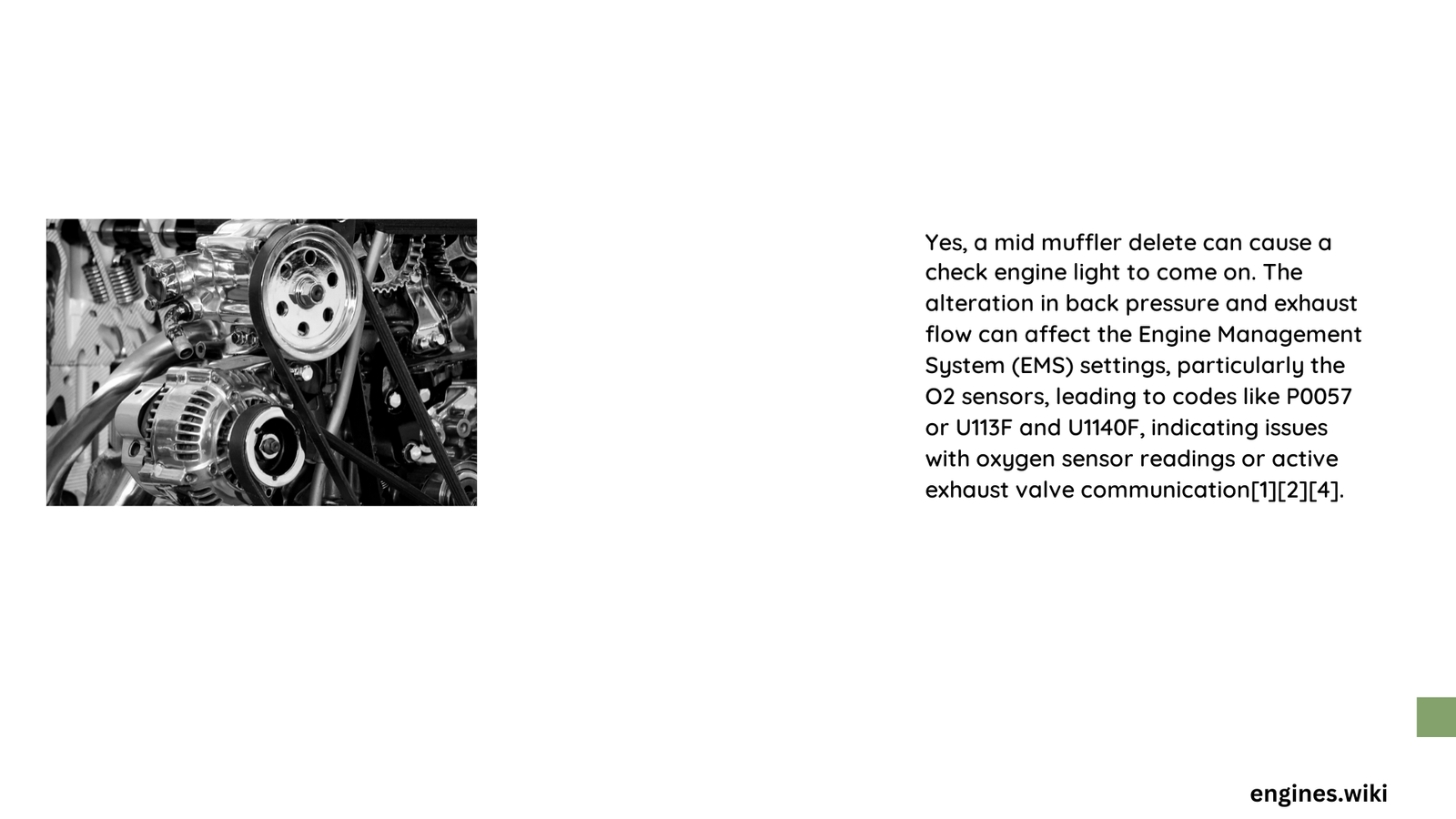A mid muffler delete can potentially trigger your vehicle’s check engine light due to complex interactions between exhaust system modifications and the Engine Management System (EMS). Changes in exhaust flow, back pressure, and oxygen sensor readings can cause unexpected electronic system responses, leading to potential diagnostic trouble codes and warning indicators. Understanding these technical nuances is crucial for automotive enthusiasts considering performance modifications.
What Happens When You Delete Mid Muffler?
When you remove the mid muffler from your vehicle’s exhaust system, several critical mechanical and electronic interactions occur:
Impact on Exhaust Flow Dynamics
- Altered Back Pressure: Removing the mid muffler significantly changes exhaust gas flow characteristics
- Sensor Reading Disruption: Oxygen (O2) sensors may receive unexpected exhaust flow measurements
- Engine Management System Confusion: EMS might interpret modified exhaust signals as potential system anomalies
Potential Check Engine Light Triggers
| Modification Type | Likelihood of Check Engine Light | Typical Sensor Affected |
|---|---|---|
| Partial Mid Muffler Delete | High | O2 Sensors |
| Complete Exhaust Modification | Very High | Multiple Sensors |
| Tuned Performance Deletion | Low | Minimal |
Why Do O2 Sensors Cause Check Engine Light?

O2 sensors play a critical role in monitoring exhaust gas composition and providing real-time feedback to the engine control unit. When a mid muffler is deleted:
- Unexpected Oxygen Readings
- Sensors detect significant changes in exhaust gas flow
- Readings deviate from manufacturer-programmed parameters
-
Engine control unit interprets these as potential system failures
-
Sensor Calibration Challenges
- Stock O2 sensors are designed for specific exhaust configurations
- Mid muffler deletion disrupts expected sensor performance
- Potential activation of diagnostic trouble codes (DTCs)
How to Prevent Check Engine Light After Muffler Delete?
Automotive enthusiasts can mitigate check engine light risks through strategic approaches:
- Professional Tuning
- Custom ECU recalibration
- Adjusting sensor sensitivity
-
Matching exhaust flow characteristics
-
High-Quality Replacement Components
- Performance-oriented O2 sensors
- Advanced exhaust management systems
- Precision-engineered exhaust modifications
Vehicle-Specific Considerations
Different vehicle models respond uniquely to mid muffler deletions:
Performance Car Examples
- Dodge Challenger: High probability of system communication errors
- Lexus Performance Models: Potential VSC and check engine light activation
- Muscle Cars: More tolerant of exhaust modifications
Cost and Technical Implications
| Modification Approach | Estimated Cost | Check Engine Light Risk |
|---|---|---|
| DIY Muffler Delete | $50 – $200 | High |
| Professional Tuning | $300 – $1,000 | Low |
| Complete Performance Package | $1,000 – $3,000 | Minimal |
Expert Recommendations
- Always consult professional automotive technicians
- Use high-quality performance parts
- Consider comprehensive tuning solutions
- Monitor vehicle performance post-modification
Technical Complexity Warning
Mid muffler deletion is not a simple bolt-on modification. It requires:
– Deep understanding of exhaust system dynamics
– Comprehensive knowledge of vehicle electronics
– Potential additional investments in tuning and components
Final Technical Insight
While mid muffler delete can enhance vehicle performance, it introduces complex interactions between mechanical and electronic systems. Proper planning, professional guidance, and strategic modifications are essential to minimize check engine light risks.
Reference:
– Lexus Forum Discussion
– Dodge Challenger Forum
– AcuraZine Performance Modifications
